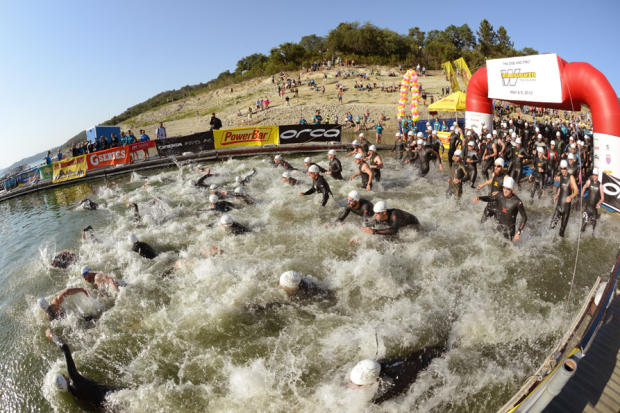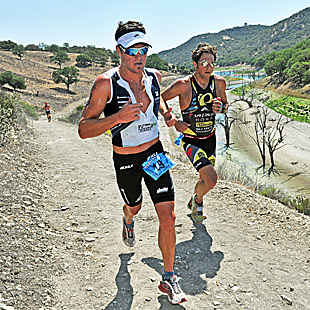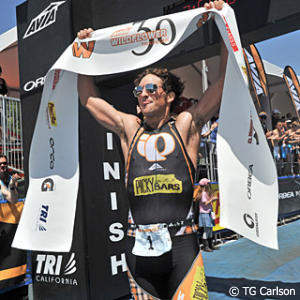Why dry Lake San Antonio?
Driving down Lynch Hill into the famed Wildflower Triathlon grounds thousands of triathletes have been met by a breathtaking sight.
No water.
Instead of the wide, inviting blue of Lake San Antonio, the 17-mile long reservoir which normally contains some 350,000 acre-feet of irrigational and recreational sustenance looked like a vision of imminent apocalypse. The lake bed was dry and looked more like a huge Saharan wadi – a valley or streambed which is dry except for the rainy season. Only California seems to have completely missed a rainy season or two.
"It's the driest period in the greater San Francisco area since the [1850s] Gold Rush," said an expert of the environmental Earth systems science at Stanford. Snow water equivalents in the Northern Sierra Mountains are fully 91 percent lower than average. The 2013-2014 Water Year is now among the driest on record in the state of California, which follows the driest calendar year on record in 2013 and California's warmest winter on record — from December 2013 to March 2014.
The awesome spectacle of the missing water at the main boat ramp at Lake San Antonio did not quite live up to sci-fi horror movie scenarios. "I was imagining desolate desert sand and dying fish smelling up the whole valley," said Sean Watkins, husband of two-time defending champion Heather Jackson. "But actually, there seems to be some beautiful green grass down there and the air is fresh." According to some triathletes who attended the recent USA Triathlon Collegiate Nationals in Tempe, Arizona, by contrast to Wildflower, low water levels in Tempe Town Lake gave off a malodorous aroma.
Catastrophe at Wildflower? Not quite. And not enough to wipe out the swim at Wildflower, although adjustments had to be made.
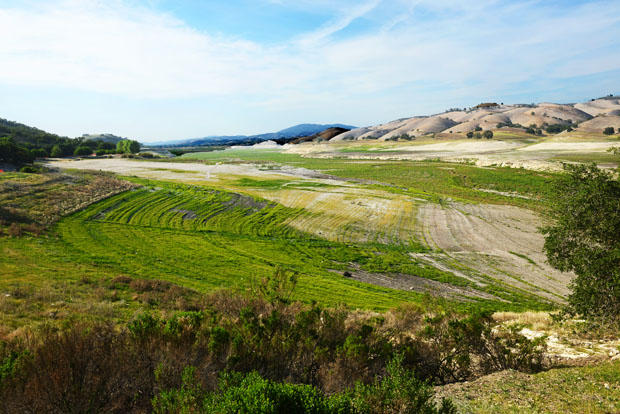
Fortunately, there remains a pocket of water two miles away, next to the San Antonio Dam, at the lowest section of Lake San Antonio, known as Harris Creek. While the water level there was not high enough to use a nearby recreational boat ramp as a swim exit, the Tri-California crew fabricated a temporary ramp and cut a trail to a new run course on a sand path along the shoreline that used to be under water. That new section will stretch two miles and will serve as the route for swimmers to come back to the regular transition. Weak runners need not fear unfairly long run distances — Wildflower workers cut out 2 miles of the final leg to make the total run a regulation 13.1 miles.
Wildflower race director Terry Davis, who has been on scene even before the inaugural Wildflower long course event in 1983, gave the background of this unusual situation in an interview at race headquarters.
Slowtwitch: When did you start to get concerned about water levels?
Terry Davis In October the lakes were down. But normally they come back in January. And so we were anticipating we might need to take some action.. Through the end of February we waited to see what was going on.
ST: When did you know something had to be done?'
Terry: Two months into the year, we decided before that it didn’t make any difference what we did — we could make a decision in two months. So we decided not to pre plan but wait – and pray. In March we started working on the alternate plan. So from the beginning we knew we weren't going to have the situation where we were going to have a duathlon. We knew that we had enough water in the Harris Creek area to hold a swim.
ST: What part of the lake is Harris Creek?
Terry: It is the southeast part of the lake toward Paso Robles. It is next to the San Antonio Dam, which is why they had an accumulation of water there. So we knew we would be able to swim.
ST: Any other variables at that time?
Terry: The second option was praying it would come up enough that we would be able to use the launch ramp down there. But it didn't come up quite that far enough.
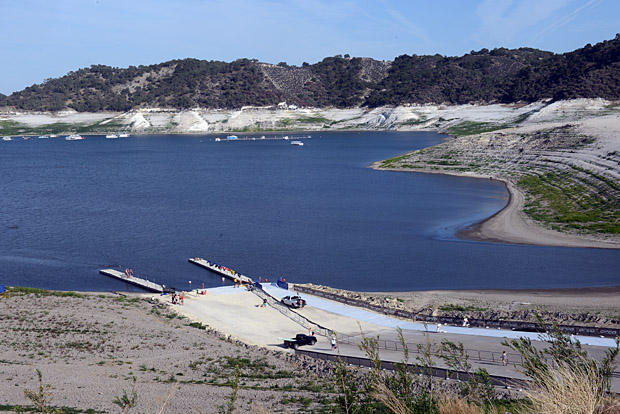
ST: So what did you have to do?
Terry: When you got into the water, it was silt and you would step in and sink down to your knees in mud. So we put something like an airplane cargo tarp down in the swim exit so it was safe. Basically what we created a temporary ramp which is 20 feet wide and 60 feet long. So we built the ramp on shore and then we pushed it in the water. Then we carved a path on shore and we leveled it out.
ST: Have you seen anything like this year's water levels?
Terry: No. I've been coming to the lake for more than 30 years. I first came with my family when I was 14 years old in 1962, the year they started work on this dam. The San Antonio Dam is at Harris Creek and it is 200 feet high.
ST: What is the purpose of this reservoir and where does it get the water?
Terry: It was built for watershed agricultural irrigation. Water comes from rain runoff off the Santa Lucia Mountains above the coastal area of Big Sur. The Santa Lucia Range is above the coastal area of Big Sur. Basically it is a really cool phenomenon. They get lots of rain in Big Sur. Because of the way the mountain structure is right next to the ocean, the clouds come in and drop a lot of rain. And so when it rains in Big Sur, the water runs from Big Sur south to Lake San Antonio and Lake Nacimiento.
ST: How does the water get from the reservoir to the farms?
Terry: The water goes from the dam through the San Antonio River to the Salinas River. The Salinas river runs north to Monterey Bay and serves many farms in the Salinas Valley, which is called the Salad Bowl of the World. It's a multi-billion dollar agricultural center.
ST: This occurrence is not entirely a natural phenomenon of the drought?
Terry: This is a man-made reservoir. They dammed up the mountain and created a man-made lake with 5,000 acre-feet of surface area, 17 miles long. At deepest point, it is 120 feet deep. The capacity is 350,000 acre-feet. It was built by the Monterey County Water Authority to create irrigation water for farming. And second to that is the recreational use for fishing, boating camping – and our triathlon here.
ST: When was it built and what was there before?
Terry: The dam was built in 1962 [and finished in 1965] to create the lake. There was a little town called Bryson in the middle of it and they wiped it out.
.
ST: Over the years, the water level at Lake San Antonio has varied quite a bit. This hasn’t been a gradual decrease has it?
Terry: No. Over the last few years, there are a couple of things that happened. One is a couple years ago Lake Nacimiento which is south of here, they both flow into the same river. But they had to do some work on Lake Nacimiento and consequently they had lower the water below normal minimum level to work on the dam. So Nacimiento was already below minimum level before the drought. So then they had to take water out of San Antonio to make up for what Nacimiento didn't have.
ST: Do Lake San Antonio and Lake Nacimiento get the same amount of water?
Terry: Usually the Nacimiento River gets two or three times as much water as the San Antonio River because of the way the mountains feed into the rivers. Although the San Antonio River has less water, it still fills the dam – and Lake San Antonio.
ST: So why did this happen?
Terry: It is a couple years of drought coupled with repairs they had to do on the Nacimiento Dam. But things are looking up. Weather scientists are already anticipating that next year we will have an El Nino and there will be a lot of water.
ST: Will it take a long tiome to refill Lake San Antonio?
Terry: The very first year the dam was built, they said it will take five years to fill it up. It filled up the first year and went over the spillway the very first years. We only need to be about a third full to the lake get back to normal conditions. So there is no reason to panic.
ST: What have you learned from this?
Terry: What you learn is there are a lot of things that are out of your control. And when you look at what we are dealing along with and what they must deal with in the central valley with all those farms, this doesn’t amount to a hill of beans. There are a lot of things that are out of your control and all you can do is face 'em, look at the challenges and see what you can do to find the best possible solution.


